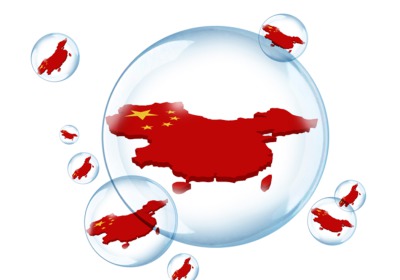Warnings of debt crisis get louder
chinaworker.info
China’s economy made a shaky recovery last year, which continues into the Year of the Rooster. But short-term growth has been bought at a huge cost, by injecting record levels of credit into the economy and thereby magnifying longer-term financial risks. This is the bleak reality behind the dictatorship’s public message that the economy has ‘stabilised’ after the financial turmoil of 2015.
Beijing’s policies “echoed back to the era immediately following the [2008] global financial crisis”, commented the US-based Business Insider website. It pointed to “debt and state-backed infrastructure investment, along with a loosening of housing market restrictions”.
The numbers involved are eye watering. Last year, total social financing (TSF), a broad measure of credit in the economy, expanded by 17.8 trillion yuan (source: People’s Bank of China). That is equivalent to 24 percent of last year’s GDP (74.4 trillion yuan). Even this sum does not include all new loans from the shadow banking sector, which have risen sharply in recent months as the central bank has tried to rein in banks’ official lending. So, the real picture is even more serious. This shows an economy that is “running in order to stand still”.
It means that Xi Jinping’s regime, facing acute challenges due to global economic and political upheavals (Trump, shrinking trade and protectionism) and the threat of instability at home (social unrest and intra-regime power struggle) has abandoned, at least temporarily, attempts to get control over the debt problem. The trend is confirmed by the data for January 2017, which shows new loans (TSF) hitting a new monthly record of 3.74 trillion yuan.
The IMF warned last October that China is facing “financial calamity”. Markus Rodlauer, deputy director of the IMF’s Asia-Pacific department, said that unless China’s debt levels are brought down it risks a financial crisis that could have “very serious repercussions” for the global economy. Such warnings are echoed by numerous global institutions and banks and even by some Chinese officials.

Weakest growth for 26 years
China’s GDP growth was 6.7 percent last year, the lowest for 26 years. Most people are sceptical to the official figures and believe real growth could be significantly lower. Dutch financial company Rabobank estimates real Chinese growth is currently around 4.5 percent. The credit-driven ‘recovery’ means that while the headline GDP figures cannot be trusted they are probably not as fake as the figures for 2015. Even the government’s statistics boss railed against “data fraud” recently. Ning Jizhe, the head of the National Bureau of Statistics (NBS), threatened severe punishments for officials who make up fake statistics. The statistical gap between China’s national GDP and the sum of its provinces is 2.76 trillion yuan – equivalent to Thailand’s GDP.
Recent growth has primarily been driven by the real estate bubble, mostly but not wholly in the biggest ‘first tier’ cities. This is based more than ever on financial speculation and debt. Mortgage lending has increased sharply, and made up the largest share of bank loans last year, a radical change from the past.
Housing is not the only sector where speculative bubbles are forming; this is also the case in commodities – with speculators gambling on energy, metals and agricultural prices as a substitute for the lacklustre stock market. This has led to a partial reversal of Beijing’s capacity curbs, with some provinces reopening mothballed coal and steel plants to take advantage of the rebound in prices. After four years of heavy losses and a collapse in prices, coal mining profits jumped 156 percent in the first eleven months of 2016. This is a largely artificial boom fuelled by speculation, which in turn is fuelled by debt. It also produced the record-breaking smog that has choked most of northern China during the winter.
Political imperatives
Economists worry about the sheer amount of money now churning around the Chinese economy. This is because profitable investments in the real economy are few and far between. Increasing capital flight, driven by fears the yuan has entered a cycle of depreciation, is another reflection of this problem. With Beijing tightening capital controls (although these can never be fully effective) the hot money trapped inside China is blowing up financial bubbles rather than going into productive investments.
“You have this huge amount, nowhere to go,” argues Derek Scissors, chief economist at the China Beige Book, a US consultancy that conducts surveys with Chinese companies. “You can’t handle that size of money stock other than bubble, bubble, bubble,” he told CNBC. If we look at so-called ‘M2’ money supply – a measure that includes cash but also less liquid assets such as savings deposits, money market securities and mutual funds – China now has about US$9 trillion more money in circulation than the US with an economy around 50 percent bigger. In 2011, China had only US$2 trillion more.
To sum up, there is nothing sustainable about the current ‘stabilisation’ of the economy; it has been achieved by inflating new debt-financed bubbles (housing and commodities) to fill the gap left by the collapse of the previous bubble (stock market). Skipping from bubble to bubble is clearly not a sustainable economic strategy. But for political imperatives – the fear that a sharp economic downturn could destabilise Xi Jinping’s rule – the regime is gambling its economic future in order to avoid an immediate crisis.




